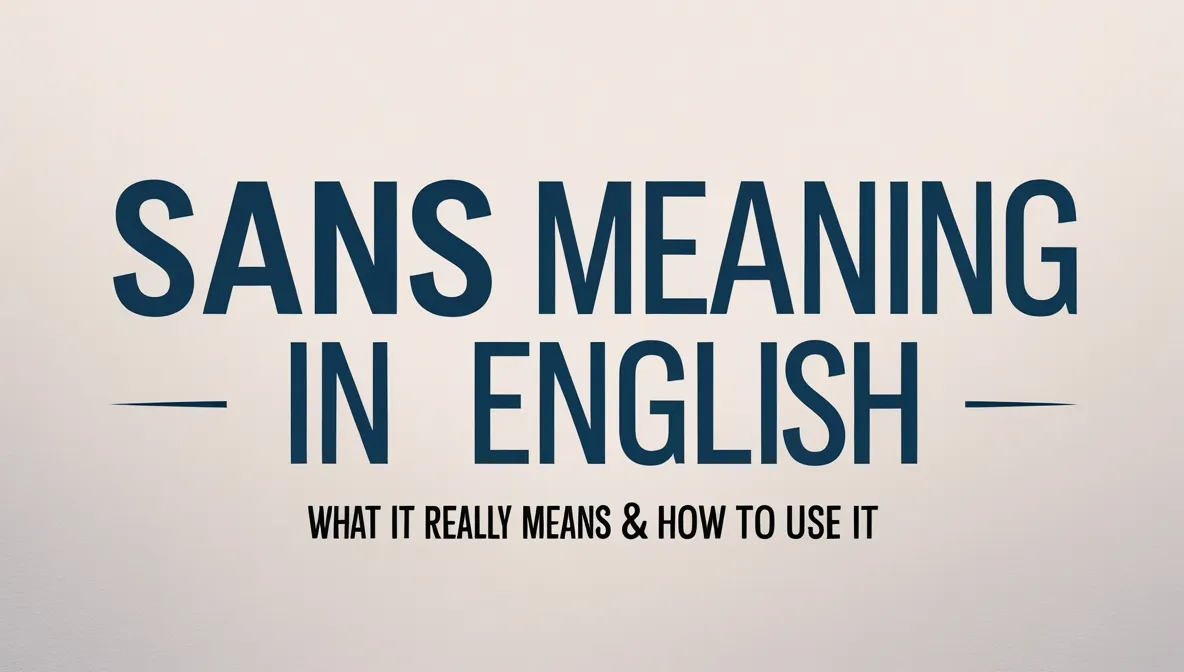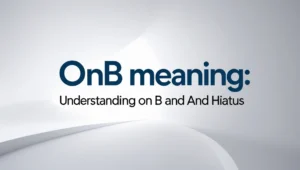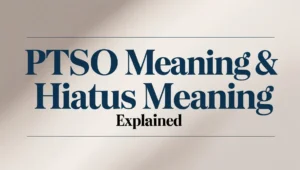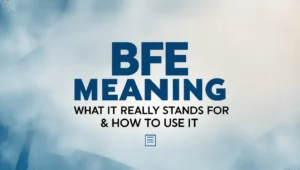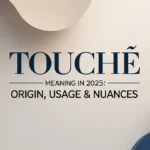Have you ever stumbled upon a phrase like “sans makeup” or “sans regret” and wondered what it really means? The word “sans” might seem uncommon, but it carries a simple and elegant definition: it means “without.” In today’s world of modern English, understanding the meaning of “sans” in English can help you add variety, sophistication, and even a touch of humor to your writing or speech. This article will explore what “sans” means, where it comes from, how it’s used today, and how you can naturally work it into your everyday language.
What Does “Sans” Mean in English?
At its core, “sans” is a preposition that means “without.” It’s used in the same way you’d use the word without, but it carries a slightly more refined, poetic, or stylized tone. While it’s not a word you’ll hear every day in casual speech, it still pops up in writing, headlines, and creative expression.
For example, saying “He entered the room sans a jacket” means exactly the same as “He entered the room without a jacket,” but the word sans adds a bit more flavor or tone to the sentence.
Origin of the Word “Sans”
The word sans has its roots in Old French, where it directly meant “without.” It was adopted into Middle English during the medieval period, and although its usage today is less common, it has never truly disappeared.
Writers, poets, and modern creatives still love using sans for its elegance and simplicity. It lends a touch of sophistication or dramatic flair — which makes it appealing in many types of expression, from literature to fashion to digital design.
How to Use “Sans” in a Sentence
Using sans is actually very easy — you just swap it in where you’d normally use without. The structure stays the same, and there’s no need to change the rest of your sentence. Just place sans in front of the noun or noun phrase.
Here are some examples of how to use it:
- I like my burger sans onions.
- She went to the party sans invitation — bold move.
- The minimalist design looked stunning sans decorations.
- He prefers coffee sans sugar.
- They launched the product sans a clear strategy, which was risky.
Each of these sentences could be rewritten using without, but sans adds a subtle tone shift — often making the sentence sound more intentional or stylish.
Where Is “Sans” Commonly Used Today?
While sans isn’t part of most people’s daily conversations, it shows up more often than you might think. Here are some areas where it thrives:
- Typography & Graphic Design: The term sans serif is widely used to describe fonts that lack decorative strokes at the ends of letters. Think Arial or Helvetica.
- Fashion & Lifestyle Writing: Phrases like “sans makeup”, “sans filter”, or “sans jewelry” are common in magazines and social media posts.
- Creative Writing & Poetry: Writers often use sans to replace without in order to create rhythm, tone, or artistic expression.
- Witty or Playful Speech: Some people use sans in a humorous way to sound exaggerated or ironic, like saying, “I arrived sans dignity after that karaoke night.”
Why Choose “Sans” Over “Without”?
Both words mean the same thing, but they serve slightly different purposes in writing or speech.
- Sans is more expressive, poetic, and stylish.
- Without is more neutral, plain, and widely used.
Think of sans as a deliberate choice — used when you want to create a mood, make something sound more creative, or stand out a little. If you’re writing a poem, a blog, or an Instagram caption, sans might be the better fit.
On the other hand, if you’re writing an instruction manual or business email, without is probably the safer and clearer choice.
Common Expressions That Use “Sans”
The use of sans often appears in short, punchy expressions. Here are some well-known examples you might come across:
- Sans filter – without any editing or enhancement (often for photos)
- Sans makeup – without wearing makeup
- Sans regret – without regret, often used dramatically or ironically
- Sans sugar – without sugar, common in food or beverage contexts
- Sans shoes – without shoes, sometimes used humorously
Each of these phrases could be rephrased using without, but the word sans adds personality and character.
The Popularity of “Sans Serif” Fonts
One of the most common and long-standing uses of sans is in design — particularly when discussing fonts.
A sans serif font is a type of font that lacks the small decorative lines (called serifs) at the ends of letters. Common examples of sans serif fonts include Arial, Helvetica, and Calibri.
Designers often prefer sans serif fonts for their clean, modern look, especially in digital environments. It’s one of the few technical uses of sans that has become a standard term across industries.
Real-Life Examples of “Sans”
Here are five natural examples that show how sans can be used in both casual and creative writing:
- She posted a selfie, completely sans filter, embracing her natural beauty.
- The presentation was bold, but unfortunately, sans data to back it up.
- He strolled onto the stage sans nerves, smiling confidently.
- Their wedding was charmingly simple, sans any over-the-top decorations.
- I can’t start my morning sans coffee — it’s just not happening.
These examples reflect how sans adds emphasis, tone, or humor depending on the context.
FAQs About the Word “Sans”
1. Is “sans” a modern English word?
Not exactly. Sans comes from Old French and was adopted into English centuries ago. While not part of everyday modern speech, it’s still used stylistically today.
2. Can I use “sans” in formal writing?
It depends on the tone of your writing. In creative, literary, or marketing content, yes. In technical or legal writing, it’s better to use without.
3. Does “sans” always mean without?
Yes, that’s its only meaning in English. It’s a direct synonym for without, though it carries a different tone.
4. Is “sans” only used in typography?
No. While sans serif is a common design term, sans is also used in fashion, writing, lifestyle, and casual expressions.
5. Can I say “sans of” or “sans with”?
No. Sans stands alone as a preposition and should directly precede the noun. For example: “sans shoes”, not “sans of shoes.”
Conclusion
So, what’s the real deal with sans? Simply put, it’s an elegant, expressive alternative to the word without. While it may not be part of everyday conversation, knowing how to use it can enhance your writing and add a creative twist to your language. Whether you’re describing a design, writing a caption, or just looking to impress with your vocabulary, using sans can give your words a fresh and stylish edge. So go ahead — try it out. Maybe start with a morning sans stress.

